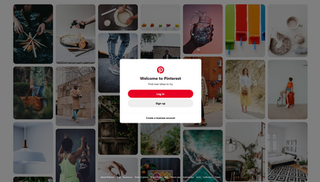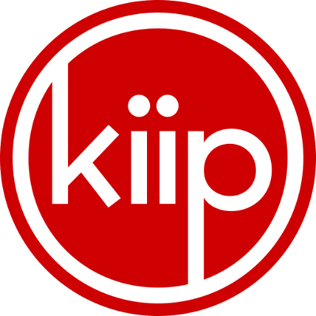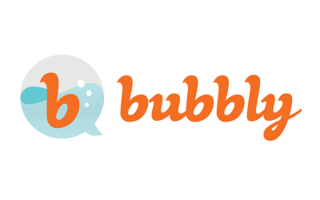
LinkedIn is a business and employment-focused social media platform that works through websites and mobile apps. It was launched on May 5, 2003 by Reid Hoffman and Eric Ly. Since December 2016, LinkedIn has been a wholly owned subsidiary of Microsoft. The platform is primarily used for professional networking and career development, and allows jobseekers to post their CVs and employers to post jobs. From 2015, most of the company's revenue came from selling access to information about its members to recruiters and sales professionals and has also introduced their own ad portal named LinkedIn Ads to let companies advertise in their platform. LinkedIn has more than 1 billion registered members from over 200 countries and territories.

Meebo was an instant messaging and social networking service provider. It was founded in September 2005 by Sandy Jen, Seth Sternberg, and Elaine Wherry, and was based in Mountain View, California. Initially the company offered a web-based instant messenger service, extending its offer in more general online chat and even social networking directions. In June 2012, Google acquired Meebo to merge the company's staff with the Google+ developers team.
Social search is a behavior of retrieving and searching on a social searching engine that mainly searches user-generated content such as news, videos and images related search queries on social media like Facebook, LinkedIn, Twitter, Instagram and Flickr. It is an enhanced version of web search that combines traditional algorithms. The idea behind social search is that instead of ranking search results purely based on semantic relevance between a query and the results, a social search system also takes into account social relationships between the results and the searcher. The social relationships could be in various forms. For example, in LinkedIn people search engine, the social relationships include social connections between searcher and each result, whether or not they are in the same industries, work for the same companies, belong the same social groups, and go the same schools, etc.
Social network advertising, also known as social media targeting, is a group of terms used to describe forms of online advertising and digital marketing that focus on social networking services. A significant aspect of this type of advertising is that advertisers can take advantage of users' demographic information, psychographics, and other data points to target their ads.

The history of Facebook traces its growth from a college networking site to a global social networking service. It was launched as TheFacebook in 2004, and became Facebook in 2005.
InMobi is an Indian multinational technology company, based in Bangalore. Its mobile-first platform allows brands, developers and publishers to engage consumers through contextual mobile advertising. The company was founded in 2007 under the name mKhoj by Naveen Tewari, Mohit Saxena, Amit Gupta and Abhay Singhal.

Pinterest is an American social media service for publishing and discovery of information in the form of pinboards. This includes recipes, home, style, motivation, and inspiration on the Internet using image sharing. Pinterest, Inc. was founded by Ben Silbermann, Paul Sciarra, and Evan Sharp, and is headquartered in San Francisco.

Kiip was a mobile advertising network. It was co-founded by Brian Wong, Courtney Guertin, and Amadeus Demarzi in 2010. Kiip provided users with tangible rewards, such as a bottle of water for every eight miles run by a user in a game. Kiip's rewards platforms was designed for in-app engagement.

An interest graph is a digital portrayal of an individual's specific interests. Its perceived utility and value stem from the premise that a person's interests form a significant component of their personal identity. They can be used as indicators of various aspects, such as a person's preferences regarding activities, purchases, destinations, as well as who they may choose to meet, follow, or support politically.
John Manoogian III is an American Internet entrepreneur, software engineer, digital designer, public speaker, and teacher. Manoogian co-founded the social technology company 140 Proof in 2009 and is recognized for practicing a "hybrid" or blended approach to design and software development. He graduated from the University of Michigan and is based in San Francisco.

News360 was a personalized news aggregation app for smartphones, tablets and the web. It attempted to learn a user's interests by analyzing their interaction with news stories on the app and using semantic analysis and natural language processing to create an Interest Graph and construct a unique feed of relevant content for each user. The app claimed an audience of more than 4 million users.
Tapad Inc. is a venture-funded startup company based in New York City that develops and markets software and services for cross-device advertising and content delivery. It uses algorithms to analyze internet and device data and predict whether two or more devices are owned by the same person. Participating websites and apps then cater their advertisements based on a collective knowledge of the user's actions across all of their devices.

Bubbly was a social voice service working across feature phones and smartphones. For feature phones, users can record their voice by dialling a short code and speaking, as well as listen to popular posts. Subscribers get a text with the short code number for dialling into Bubbly's servers to have the voice message play back. To cater to smartphone users, Bubbly was made available on iOS and Android platforms in April 2012.
The history of Twitter, later known as X, can be traced back to a brainstorming session at Odeo.
Flurry is an American mobile analytics, monetization, and advertising company founded in 2005. The company develops and markets a platform for analyzing consumer interactions with mobile applications, packages for marketers to advertise in-apps, as well as a service for applying monetization structures to mobile apps. Flurry analyzes 150 billion app sessions per month. The company's analytics platform tracks application sessions in iOS, Android, HTML5, and JavaME platforms. Flurry has raised a total of $65 million in funding since its founding and in March 2014 announced that it would partner with Research Now to create a panel database on mobile users. Flurry was acquired by Yahoo! on July 21, 2014 for somewhere between $200 and $300 million.
Chartboost is a San Francisco-based mobile game in-app programmatic advertising and monetization platform. Chartboost SDK enables developers to monetize on their mobile apps and connect advertisers to global in-app inventory. Chartboost's platform allows video game developers to create customized interstitial and video ads to promote new games. Developers have direct access to game data derived from Chartboost-enabled games. As of 2016, Chartboost had been integrated into more than 300,000 games with 40 billion game sessions per month.
This is a timeline of Pinterest, an Internet service that serves as a "visual discovery tool", as well as the eponymous company.
Foursquare Labs Inc., commonly known as Foursquare, is a geolocation technology company and data cloud platform based in the United States. Founded by Dennis Crowley and Naveen Selvadurai in 2009, the company rose to prominence with the launch of its local search-and-discovery mobile app. The app, Foursquare City Guide, popularized the concept of real-time location sharing and checking-in.







